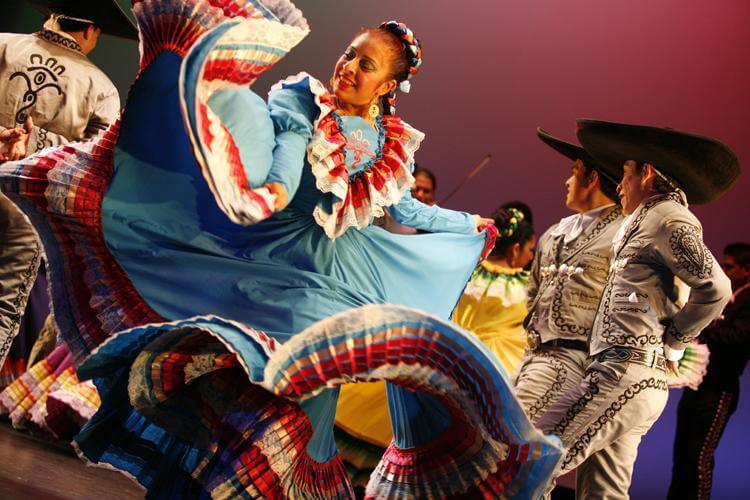By Esther Suh
In a place as diverse as Queens, it only makes sense to have Calpulli Mexican Dance Company make an impact on the community. Calpulli, a word in the Nahuatl language, refers to “groups or clans categorized by trade.” For these dancers, they are a calpulli of artists, spreading Mexican culture through dance.
In 2003, Daniel Jaquez, Martha Nora Zarate, Ernesto Villa−Lobos and Juan Castaño started Calpulli in hopes of spreading a minority culture that is gradually becoming a majority here in Queens.
“The growing Mexican community is screaming for arts and culture for their families, for personal expression, and to be represented in the colorful landscape that is the diverse populace of the area,” said Castaño, the Jackson Heights−based group’s managing director. Castaño also believes that Calpulli has the influence to inspire pride into the people of the Hispanic community.
In addition to performing shows, Calpulli also has professional education programs that take place in public schools and universities. These outreach programs give Calpulli the opportunity to “share knowledge and performance reflecting Mexican culture through dance,” according to their Web site. Calpulli also offers free workshops, open rehearsals to aspiring dancers and a donation−based children’s dance program that serves more than 60 children every season.
In celebration of its fifth anniversary Calpulli will premiere two new performances to open the season at Queens Theatre in the Park Sept. 27 and 28: “Mexika Tiawi” and “Tarahumara.”
“Mexika Tiawi,” roughly translated as “Mexican onward,” is based on Aztec tradition known as the tetzkatlipoka, described on Calpulli’s Web site as a “powerful dance [that] carries symbolism associated with natural elements; it is a high−energy movement meditation that concentrates the life force of the participants to achieve self−knowledge and harmony.”
With more than 40 dances, this performance will, according to Castaño, prove the “growth and maturity of our still very young company. Five years of work, effort, collaboration and dedication to our mission will show.”
“Tarahumara” is described on Calpulli’s Web site as a piece that “explores the dance traditions of the private Raramuri natives in northern Mexico.” The focus in this show will be put on the pre−Hispanic and pre−Christian rituals and dance forms that are “much less known and disappearing.”
These pre−Hispanic rituals, Castaño said, “are much more powerful, raw, and personal.”
This piece proved to be an arduous task for choreographers, left with the ambitious task of choreographing a culture that is essentially uncontrolled and left largely to the individual’s desire.
“In my opinion,” said Castaño, “many Christian dances as expressed by native cultures have a sense of control, of being limited. The pre−Hispanic expression is deeper and more moving, it feels like you are looking at a completely different culture, which the Raramuri are.”
In a borough chock full of different cultures and heritages, Calpulli stands out by creatively spreading Mexican culture through dance, appreciated by people of all ages.
“One of the goals of Calpulli, in general, is to find the heart of what we know as traditional; find how tradition affects us today and honor it using both folk and new forms of expression,” said Daniel Jaquez, the artistic director. “It’s an exciting, ever−changing road.”
If You Go:
Calpulli Mexican Dance Company — ‘Pasado, Presente, Pasión’
When: Sept. 27, 8 p.m.; Sept. 28, 3 p.m.
Where: Queens Theatre in the Park, Flushing Meadows Corona Park
Cost: $25, $23 seniors, $12 students
For More: www.queenstheatre.org for tickets or www.calpullidance.org



































